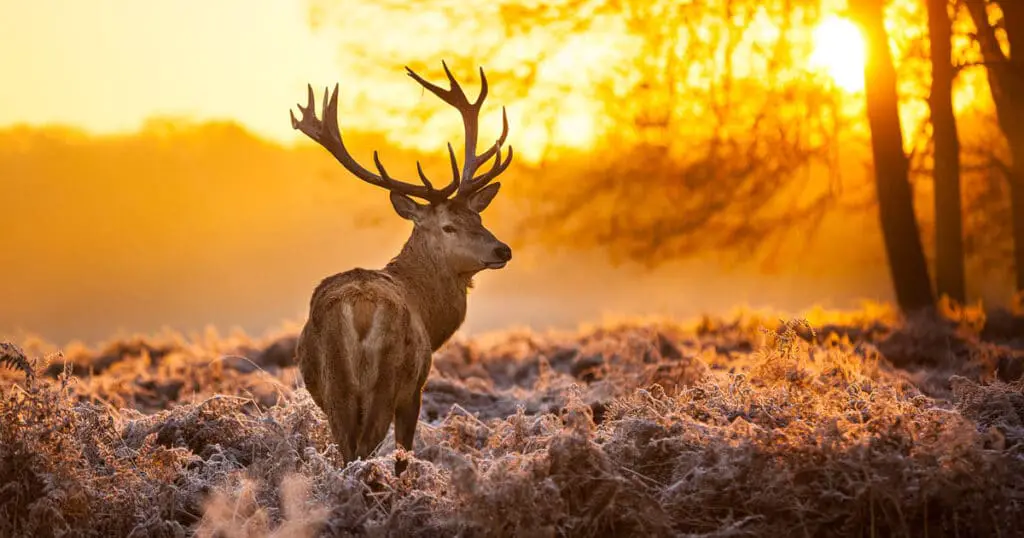We tend to assume that the only purpose antlers serve is to help male deer fight during the mating season. The truth, however, is more complicated. Why do deer have antlers? Deer antlers serve a number of different purposes, playing different roles in the lives of deer and the annual rhythms that define their lives.
In today’s article we’ll introduce you to deer antlers and the important ways they help deer to find and secure their mates, search for food, clear a path through difficult conditions, and more.
Let’s start with the basics:
What is the Purpose of Deer Antlers?
So, why do deer have antlers? The answer is: it depends on the type of deer you’re talking about. Different kinds of deer use their antlers in different ways. White-Tailed Deer often use their antlers to battle other bucks for breeding rights. Reindeer or Caribou use antlers to dig through the snow to expose forage, and some species of deer actually grow fangs instead of antlers (Vampire Deer anyone?).
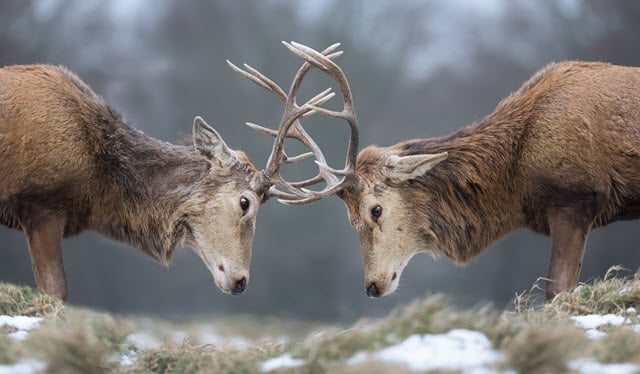
Let’s look at some of the most common deer species to discover how each uses their antlers and gain a better understanding of why deer have antlers and the role they play in their lives.
Mule Deer
The Mule Deer’s antlers have a fork shape that is helpful to the species. The bucks of this deer depend on their antlers when fighting with other males in the quest for more territory and mates.
Mule deer have ears that are similar to those of the mule in shape. This type of deer has a grayish brown color, and it’s distinguished by a black tip on its white tail, as well as a white patch on its rump.
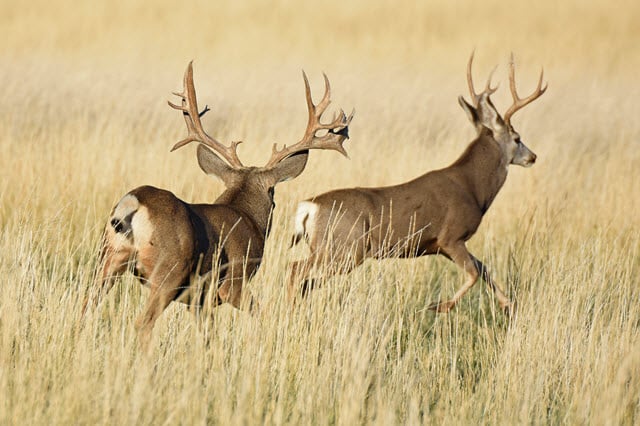
Male mule deer antlers grow in the summer and fall months. They shed them in the spring each year. In mule deer antlers, you see the antlers extending from a primary branch, and this creates two branches. Each of the antler branches features at least two tines.
Like every other kind of deer (with the exception of caribou or reindeer), only male mule deer have antlers.
Moose
Moose have legendarily enormous antlers. One of the purposes of moose antlers is to help the animal move and make their way through huge piles of snow in the cold regions where they live. Appropriate for their size, moose have the most enormous antlers of any type of deer.
A moose’s antlers are so large that they may weigh as much as 30 pounds on their own. The width may extend to 60 inches. Male moose need their antlers to fend off other males during the mating season. They also need them to assert power over their territories.
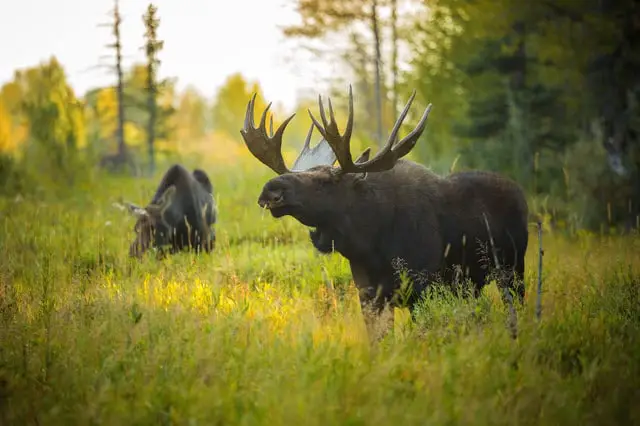
In many cases, a male moose with especially large antlers will scare off rivals just with their appearance. If a physical conflict does occur, however, the male moose may lock their antlers as they fight face to face. If things go wrong and the moose cannot unlock their antlers, they may starve to death. Even if this doesn’t happen, there may be damage to the antlers or they could get broken. These issues take significant time to heal.
Male moose will grow their antlers during the spring and the summer months, to get ready for the mating season that takes place from September to October. A large male moose will have antlers that are flat and have an appearance that has been compared to a shovel shape.
Other uses for moose antlers are rooting out plants from the bottom of ponds and making way through brush.
White-tailed Deer
The white-tailed deer is the best-known type of deer in North America. Male white-tailed deer need their antlers for fighting with other bucks during the mating season.
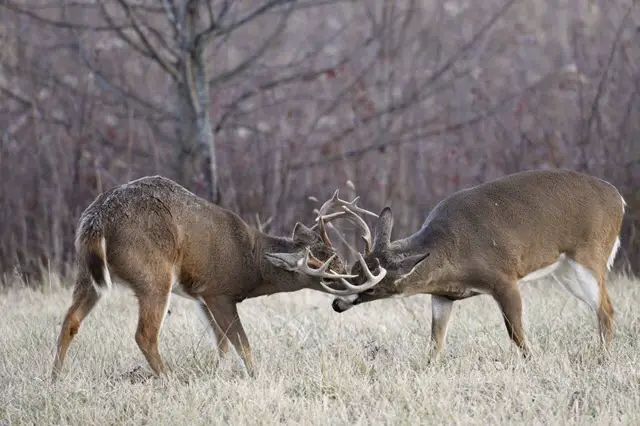
Antlers serve several different purposes for white-tailed deer. In addition to fighting during the mating season, white-tailed antlers are also used as a sign of a male deer’s health. This is believed to make female deer (does) believe that a male with huge antlers will contribute good-quality genes for her offspring.
Excellent antlers on a white-tailed deer are also a sign of dominance. Some experts think that white-tailed deer antlers may point to age and dominance related to age if antlers tend to get bigger each season.
Yet another way white-tailed deer use their antlers is to fight off predators. There is some controversy about this, with some experts believing that this may be a rare occurrence.
Like other kinds of deer, white-tailed deer shed and re-grow their antlers every year.
White-tailed females don’t generally have antlers. However, there may rarely be individual females in this species that do have antlers of some type. There are specific circumstances in which this may occur. One is if the female is actually a pseudo-hermaphrodite. Another is if a female white-tailed deer has antlers but they always have a velvet-covering. If this it the case, the female deer may still have a full female reproductive system, even though it has antlers. It is capable of getting pregnant and having fawns.
That said, it’s extremely rare for any female white-tailed deer to have antlers. The incidence is believed to be approximately 1 in 10,000.
Elk
Male elk use their huge antlers to ward off rivals during the mating season and to take more territory. With elk, most purposes of antlers are linked to mating. Bull elk require their antlers to fight with other males so that they’re able to mate in the fall.
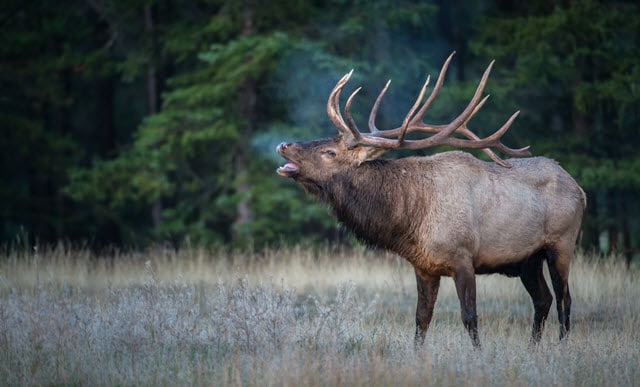
In elk, antlers can be used to show the animal’s abilities and strength, as well as health. In order to grow huge antlers, the elk’s body must use huge amounts of energy for development. Health factors such as the ability to find food and having an excellent metabolism can be indicated by excellent antlers.
After the male elk’s antlers eventually fall off, they will start growing back a few months later each year.
Caribou
As we’ll learn in a moment, caribou is another name for reindeer, but there are some differences between Reindeer and Caribou.
This type of deer uses their antlers for several different purposes, including scraping soil in the search for food and moving away snow from the soil.
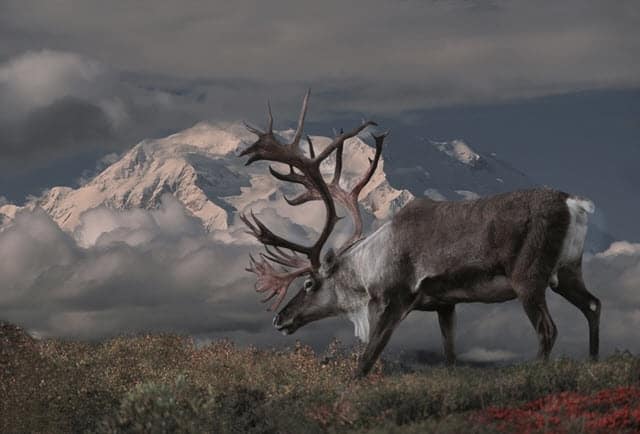
The enormous antlers of the caribou (or reindeer) have plenty of surface area, and they’re able to properly regulate the caribou’s body temperature during growth.
In caribou, larger antlers can help attract new mates and can be a sign of status.
Why Do Female Reindeer (Caribou) Have Antlers?
The Reindeer (or caribou) is the only type of deer where females have antlers. There are a few reasons for this.
One is the fact that female reindeer (like male reindeer) need antlers to help clear away snow from the ground (to find food that’s buried and inaccessible). They also use their antlers to defend the areas of ground that they’ve worked hard to clear.
Reindeer, both male and female, must live and survive in extremely challenging areas with drastically limited food supplies during much of the year. This means that both males and females need the intimidation factor of large antlers.
In reindeer, the animals with the biggest antlers are usually the healthiest, strongest, and dominant in the social group. The reindeer sheds its antlers every year. Male caribou always shed their antlers once the mating season is over, in the later part of the autumn.
Female reindeer, on the other hand, keep their antlers all the way until the springtime. This is because they’re pregnant during the winter, and they need their antlers to guard food that they find so that they can grow healthy calves.
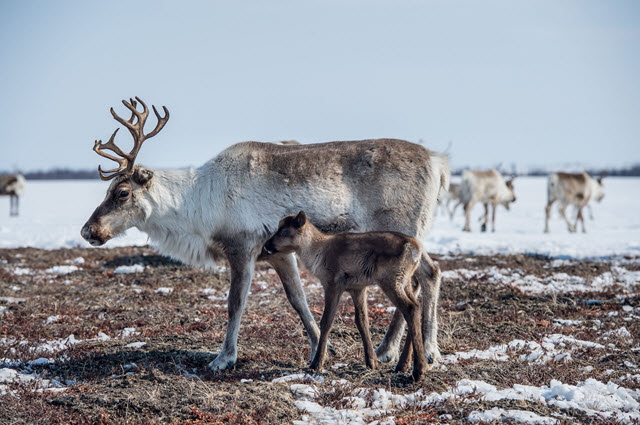
The fact that male reindeer lose their antlers in the fall and females keep theirs all the way until the spring means that any reindeer that has antlers in the winter is a female (or, if domesticated, a castrated male).
Castrated male reindeer take on the antler shedding cycle of the female. Whenever reindeer are used for pulling sleds, they are most often castrated males (sorry, Rudolph!).
There are some cases where female reindeer won’t grow antlers. An example is if the deer is living in an environment with poor or scarce food sources. This is because growing antlers takes a huge amount of energy. If a female reindeer doesn’t have antlers, there’s a strong chance that the other females in the area won’t have antlers either.
Reasons Why Deer Have Antlers
To summarize, deer have antlers for a variety of reasons, which can vary based on their location in the world, and the species in question. The primary purposes antlers serve include:
- They use antlers in combat with other males during mating season.
- They help northern species dig through snow to expose forage.
- Large antlers signal health and dominance, allowing female deer to select the best mate.
And antlers can also be used to defend against some predators.
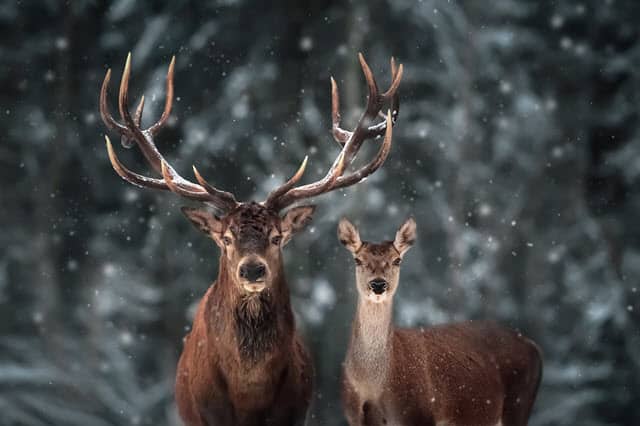
While some species will use their antlers to help unearth food critical to survival, most types of deer have antlers which are directly tied to their annual reproductive cycle.

